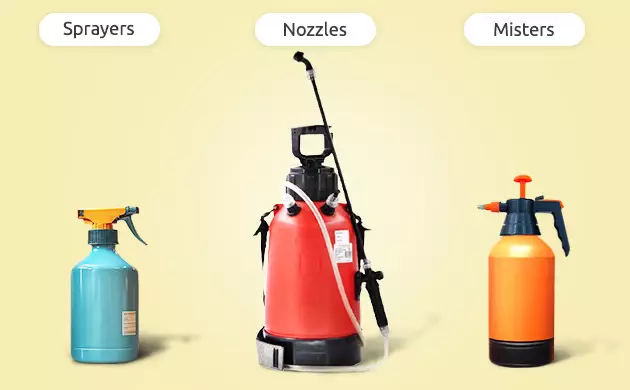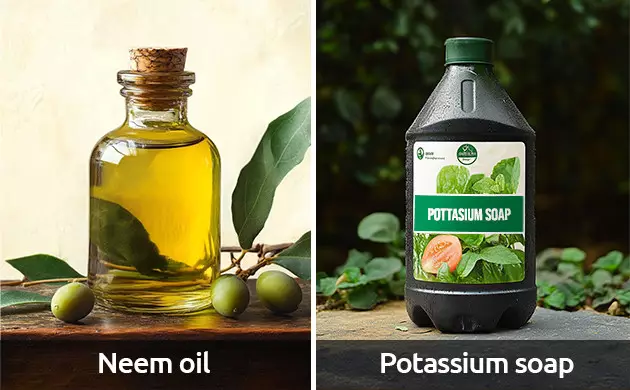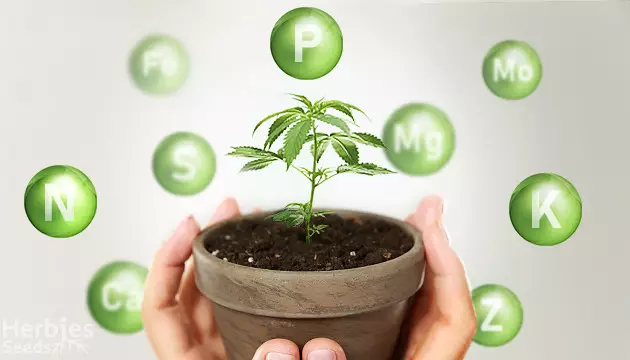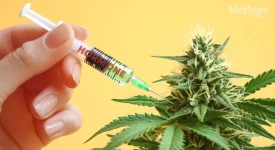Foliar Feeding for Cannabis Plants – Feed Nutes Beyond the Roots

Foliar feeding is a handy way to boost your cannabis growth by letting the plants soak up nutrients not just through their roots but also right through their leaves. Basically, you spray a fine mix of fertilizer on the leaves, which helps the plants get what they need quickly and efficiently.
In this article, we’ll dive into how foliar feeding works, the perks it brings, and how to do it the right way. Plus, you can use foliar feeding to fix nutrient shortages and even fend off pests with organic sprays that you apply directly to the leaves if your plants are dealing with an infestation.
What Is Foliar Feeding? The Science Behind the Method
Lately, a lot of growers have been discussing foliar feeding and whether it actually works. Those who are into it say it helps plants get the nutrients they need and can boost cannabis yields, even when the plants are stressed out. Back in the '50s, researchers at the University of Michigan found that leaves soak up nutrients better than roots can. But there are also folks who argue against it, claiming that leaves aren’t really made for that, and only about 15-20% of the nutrients get absorbed through them. Plus, they say that nutrients taken in through the leaves don’t get moved around the plant as well as those taken in through the roots.
The whole mechanism of feeding plants through their leaves is still up for debate. One theory suggests that nutrients get in through tiny openings on the leaves called stomata, which usually let in carbon dioxide for photosynthesis. But recent studies are leaning towards the idea that these nutrients probably get absorbed through the cuticle, which is the protective layer on the leaf.
There are several reasons to do foliar feeding, like adding fertilizers or tackling pests. If plants are dealing with an infestation, you can spray organic pesticides right on the leaves. To fix nutrient shortages, growers often use fertilizers that the plants can easily take in through their leaves. Some growers only do foliar feeding when it's absolutely necessary, while others make it a regular part of their routine just to keep things in check.
Benefits of Cannabis Foliar Feeding
Foliar feeding for cannabis has some major perks that make it a solid way to keep your plants healthy:
- It helps quickly fix nutrient deficiencies, especially for key stuff like magnesium, calcium, zinc, iron, and manganese. This is handy when the roots are struggling due to disease or stress and can’t soak up what they need from the soil.
- It also comes in handy if nutrients are getting blocked because of the wrong soil pH. While the root zone gets back on track, the plants can still grab what they need through their leaves, speeding up recovery time.
- It lets you spray organic insecticides right on the infested spots, tackling those pesky bugs effectively. Using sprays like neem oil as a preventive measure also keeps the plants safe from insects.
- Plus, it’s totally safe for the soil. The high nutrient levels in the sprays don’t mess with the soil composition or its ecosystem, giving plants a healthy and stable environment to grow.
When to Foliar Feed Your Plants: Best Time for Maximum Results

To get the best results and dodge any bad side effects, it's important to pick the right conditions and timing for foliar feeding.
- Skip it during the heat. Spraying in the middle of the day can mess with your plants. The water droplets act like little magnifying glasses and can burn the leaves. Plus, when the sun's out, the solution evaporates quickly, which makes it less effective.
- The ideal time is in the morning or evening. Try to do your foliar feeding early in the morning or after the sun goes down, especially on cloudy days. This helps prevent evaporation and lets the plants soak up all those nutrients.
- Avoid it during the flowering stage. It's not a good idea to spray your plants when they're in bloom because it can mess with the flavor of the buds and increase the chance of mold due to too much moisture. If you really need to, just spray the leaves and steer clear of the buds.
Instances in Which Foliar Spray Cannabis
If you notice that your plants are missing some key elements, foliar spraying them can quickly fix the issue. The leaves can soak up about 95% of the nutrients, and you might see some positive changes in just 48 hours.
Plus, foliar feeding is great for tackling pest problems. If you spot bugs or fungus, treating the leaves with a potassium soap solution is a reliable and safe way to deal with it. This stuff not only gets rid of the pests but also keeps your plants safe.
Besides helping with specific issues, foliar feeding is also great for prevention. Spraying every week or two can help dodge a bunch of problems. For instance, Cal-Mag solution gives your plants those essential micronutrients that are tough to get through the roots. Plus, using neem oil creates a protective shield against pests, keeping your plants healthy throughout their growth cycle.
What to Foliar Feed: Nutrient and Additive Solutions for Foliar Sprays
To make sure your plants get the most out of foliar feeding, it’s important to choose the right mixes that give them all the nutrients they need. Different nutrients and additives can not only fix any shortages but also boost the plant's immune system, keeping it safe from diseases and pests. Let’s take a look at the key ingredients for foliar solutions and why they’re crucial for keeping your cannabis healthy.
Choosing the Right Nutrients for Foliar Feeding
The leaf's cuticle has tiny pores that carry a negative charge, which helps it attract and soak up positively charged elements like calcium, magnesium, potassium, and ammonium nitrogen. These nutrients can easily slip through the cuticle and get the plant all the good stuff it needs. But when it comes to negatively charged elements like phosphorus, sulfur, and nitrate nitrogen, they have a tough time getting in because of the repelling charges.
Once the nutrients make it into the leaf, they spread around the plant in different ways. Small molecules like ammonium, potassium, and urea can zip through the vascular system and reach all parts of the plant without a hitch. On the flip side, bigger molecules and highly positively charged ions tend to stick around the entry point, clinging to the negatively charged cell walls and not spreading out as much.
Organic Foliar Feeding

Organic additives are safe and help keep plants healthy without any synthetic chemicals, which is important for growing clean cannabis. A lot of growers like to whip up their own boosters using natural stuff like aloe vera leaves and juice, fermented fruit juices (FFJ), fish oil, milk, cinnamon oil, and chili pepper.
DIY Foliar Sprays for Weed
If your plants are growing in nutrient-rich soil but you still want to boost their immune system, help them handle stress better, or speed up recovery after being transplanted or sick, there's a great all-purpose foliar feed that works for plants at any stage of their life. Just mix up:
- 0.5-1 tsp of silica per liter of water
- 0.5-1 tsp of fulvic acid per liter
- 0.5 tsp of seaweed extract per liter
- 1/4 tsp of aloe extract per liter
- 1/4 tbsp of water-soluble sulfur per liter
Before you toss it in the sprayer, mix the silica with a little water first. Then, throw all the ingredients into the tank and give it a good stir before each use.
How to Foliar Feed Cannabis Like a Pro
Now that you know why and what to spray, check out how to set up your spraying process so you can dodge any mistakes and get pro-level results.
Equipment

When it comes to giving leafy plants a boost, there are a few types of gear that people usually use. Here are some of the most popular ones:
- Backpack sprayers are basically tanks with a sprayer that you wear on your back. They're handy for small to medium gardens because you can target specific plants easily. Plus, they use less liquid, which is great for saving money, but spraying large areas can be a bit of a workout.
- Handheld sprayers are great for little gardens. They let you target specific spots on your plants, but they don’t hold a lot of liquid, so you’ll need to refill them often if you’re covering a big area.
- Foggers whip up a fine mist that coats the leaves evenly and gets nutrients right where they need to go. These tools are perfect for big crops since they cover everything well and can even reach deep into the canopy. But, they do use up more liquid, and those tiny droplets can slide off the leaves, which means some of the solution gets wasted.
The Dos
To make foliar feeding more effective, here are some tips:
- Use fulvic acid, as it helps get those micronutrients to the plant. Its tiny molecules can sneak in the leaves, while humic acid is better for root feeding.
- Spray the leaves on both sides to help the plant soak up all those nutrients.
- Don’t forget to keep the root system moist, as this boosts the impact of foliar feeding.
- Keep an eye on the pH level of your solution: for soil plants, aim for a range of 6.0–7.0; for hydroponics, stick to 5.5–6.5.
- Follow the guidelines and dosages: stick to the recommended amounts and frequency to avoid any bad side effects.
The Don’ts
To combat possible adverse effects of foliar feeding:
- Don’t treat it like a substitute for root feeding: it’s generally tougher for plants to soak up nutrients through their leaves, which can up the chances of causing foliar spray burn of leaves.
- Skip spraying when it’s too dry, since that can stress your plants out.
- Be careful and stick to the basics: overdoing it with leaf fertilizers can lead to chemical burns, messed-up leaves, and stunted growth.
Foliar Feeding and Pest Management

To keep cannabis plants healthy, some growers like to use organic sprays instead of just sticking to root treatments. Neem oil is a go-to natural insecticide and fungicide that’s often mixed with aloe vera juice and potassium silicate to boost its effectiveness. Spraying weekly during the veg stage helps strengthen the plants and keeps pests at bay. Potassium soap and neem oil wipe out aphids and other bugs, stopping them from coming back.
Natural stuff like cayenne pepper, nettle, cinnamon oil, and even milk can help tackle fungal issues without harming the plants. There are also beneficial fungi like Beauveria bassiana and Metarhizium anisopliae that can infect pests, plus Bacillus thuringiensis (Bt) bacteria that paralyze the guts of larvae. These little guys are a green alternative to chemical insecticides for protecting your plants.
Recipes for Preventing Pests and Mildew
To keep pests and diseases at bay, you should figure out what threats are common in your area and pick the right organic solutions, like neem oil, insecticidal soap, and those fungi or bacteria we mentioned earlier. Just mix these with water according to the instructions and spray them on your plants, paying extra attention to the spots that are affected.
Here’s a basic recipe for your spray:
- 0.5 tsp of unscented castile soap per liter,
- 1 tbsp of 70% isopropyl alcohol per liter,
- 10-15 ml of mineral oil per liter.
This mix works great against soft-bodied pests like thrips, aphids, and mites. If you switch it up with stronger stuff like neem oil or Beauveria bassiana products, you’ll really cut down on those pesky critters.
Final Thoughts
Foliar feeding and spraying to tackle pests are handy tools for any cannabis grower. They help boost plant nutrition, quickly fix nutrient shortages, fight off pests, and keep diseases at bay. By knowing when and how to use these methods, growers can really up their yield and improve the quality of their harvest.
Herbies Head Shop expressly refuses to support the use, production, or supply of illegal substances. For more details read our Legal Disclaimer.














Thank you for leaving a comment for us!
Your feedback will be posted shortly after our moderator checks it.
Please note that we don’t publish reviews that: